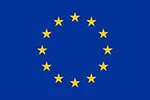2025 saw Europe’s Rail (EU-Rail) make significant progress across multiple initiatives, fostering partnerships and...


On 21 June 2024, the Governing Board of Europe’s Rail Joint Undertaking (EU-Rail) adopted a Call for Expression of Interest (CEI) with a view to selecting associated members with the potential to contribute to the achievement of its objectives. The Governing Board decision can be accessed here.
Discover detailed information about procurment rules and information.
Access detailed information about past tenders.

Europe's Rail regularly published Calls for Tenders. To find out about open Calls, follow link below.

Article 15 (Principle of transparency) of the EU-Rail financial rules states that the JU shall make available on its internet site no later than 30 June of the following financial year information on the recipients of funds deriving from its budget.
EU-Rail’s Innovation Pillar (IP) is tasked to deliver operational and technological solutions that contribute to a more efficient, flexible, and demand-led, yet safe and environmentally sustainable European railway system.
The System Pillar provides governance, resource, and outputs to support a coherent and coordinated approach to the evolution of the rail system and the development of the system view.
The Deployment Group advises the EU-Rail Governing Board on the market uptake of rail innovation developments and support their deployment.
For a successful and effective implementation of the Digital Automatic Coupler for European rail freight (DAC), it is of crucial importance to have open, close and efficient cooperation between rail stakeholders. The European DAC Delivery Programme enabled by Europe’s Rail, offers a unique European platform for such cooperation and collaboration.
Discover how Europe’s Rail Joint Undertaking is calling for a bold, coordinated investment strategy to simplify and modernise rail systems across the EU. This public-private partnership model – outlined in our High-Level Paper – proposes an €18 billion investment from 2028 to 2034 to strengthen European competitiveness, deliver greener transport, and drive technological sovereignty.

Discover detailed information on Europe's rail innovation initiatives, showcasing flagship and other projects aimed at enhancing rail systems across Europe. It highlights collaborative efforts funded by the European Union to develop sustainable, efficient, and competitive rail transport solutions.

Europe’s Rail Catalogue of Solutions illustrates successful R&I results in the form of possible products and solutions, while highlighting the benefits for final users, operators, infrastructure managers and/or suppliers. This publication also outlines the advantages of integrating demonstrators into market solutions so that they can deliver the rail innovation Capabilities of the future.
Under this role, the System Pillar provides governance, resource, and outputs to support a coherent and coordinated approach to the evolution of the rail system and the development of the system view, based on a formal functional system architecture approach to speed innovation and deployment. The System Pillar brings rail sector representatives under a single coordination body. To achieve this, the System Pillar will deliver a unified operational concept and a functional, safe and secure system architecture, with due consideration of cyber-security aspects, focused on the European railway network to which Directive 2016/797 applies (i.e. the heavy rail network) as well as associated specifications and/or standards.
Whilst most individual railway systems have views of the future railway architecture, there is no common EU railway system view that is used today. The railways have traditionally approached systems architecture following a national – even regional –technical approach, leading to a heterogeneous picture at European level. National markets for rail infrastructure and vehicles continue to exist in a way that has been overcome in other modes of transport or sectors. The problem with this is that innovations and changes to the system are very difficult and costly to achieve. Ultimately this undermines the performance and competitiveness of rail transportation. The purpose of the System Pillar is to improve the European railway system to offer better services for European passengers and freight and to make rail traffic more efficient and less costly. It shall ensure that the evolution of the rail system is based on common operational visions and a layered functional architecture, facilitating the uptake of harmonised, innovative solutions by the sector. The strategic target is the Single European Railway Area (SERA).
The necessary technical specifications are collected in the System Pillar and revised with the sector to feed into the Technical Specifications for Interoperability (TSI) and the European standardisation process.
The System Pillar is managed and led by the System Pillar Unit of EU-Rail, under the responsibility of the Executive Director, within the governance established by the Single Basic Act (Council Regulation (EU) No 2021/2085 of 19 November 2021).

